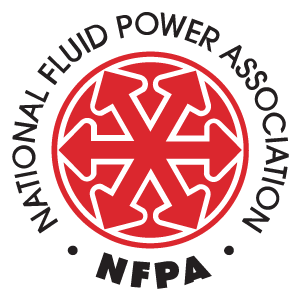As part of an effort to bring more information about the regulatory and legal environment facing American manufacturers, NFPA is monitoring the newsfeed of the National Association of Manufacturers (NAM) and will be bringing important updates like this to the attention of NFPA members.
On Thursday (June 6), the NAM, joined by other business groups, filed the opening brief in their pending lawsuit against the Environmental Protection Agency.
What’s going on: In March, the groups petitioned the D.C. Circuit to review the EPA’s reconsideration of the National Ambient Air Quality Standards for fine particulate matter (or PM2.5), which lowers the allowable level to 9 micrograms per cubic meter of air from 12, a 25% reduction. The agency handed down the final, tightened rule in February.
In their brief, the coalition argues that the EPA lacks the authority under the Clean Air Act—the law that authorizes it to establish the NAAQS—to “reconsider” a decision made in 2020 to not lower the PM2.5 standard; that the agency failed to take into account the cost and feasibility of a tightened standard; and that it failed to give a “reasoned explanation for key aspects of its decision.”
The groups participating in the suit with the NAM are the U.S. Chamber of Commerce, the American Chemistry Council, the American Petroleum Institute, the American Forest & Paper Association, the American Wood Council, the National Mining Association and the Portland Cement Association.
Why it’s important: The tighter NAAQS rule could result in many parts of the U.S. being designated as in nonattainment, which would trigger significant new costs for manufacturers and others attempting to obtain air permits in those locations.
Many of these areas “are indisputably handicapped in their ability to reduce emissions to meet the new NAAQS” due to factors beyond municipalities’ and manufacturers’ control (i.e., wildfires, which affect most of the contiguous U.S. at some point each year).
The new rule could also prevent manufacturers from building or modifying facilities in certain areas, undermining the Biden administration’s own “Investing in America” agenda, as it would stifle investment in manufacturing and kill—not create—well-paying manufacturing jobs.
What should be done: The rule should be vacated as soon as possible, the groups told the court.
Recent Posts
Member Highlights the Value of NFPA’s Conferences
At NFPA, our members’ experiences are the foundation of what we do. We’re excited to share our latest testimonial video featuring Ken Baker, CEO of Bailey International, who underscores the value of attending NFPA events. In his video, Ken highlights how the Economic & Industry Outlook Conference provides invaluable insights for his business. From the…
NAM Regulatory Update: House Passes Critical Minerals Bill
As part of an effort to bring more information about the regulatory and legal environment facing American manufacturers, NFPA is monitoring the newsfeed of the National Association of Manufacturers (NAM) and will be bringing important updates like this to the attention of NFPA members. (November 15, 2024) The House easily passed an NAM-backed bill intended…
Fall 2024 Economic Update Webinar – Recording Available
The most recent NFPA Economic Update Webinar featured Lauren Saidel-Baker of ITR Economics. Learn what to expect from a number of our industry’s most popular customer markets, while also getting the answers you need to the short-term outlook for the fluid power industry. These insights and more are available to NFPA members in the archived recording of the…



